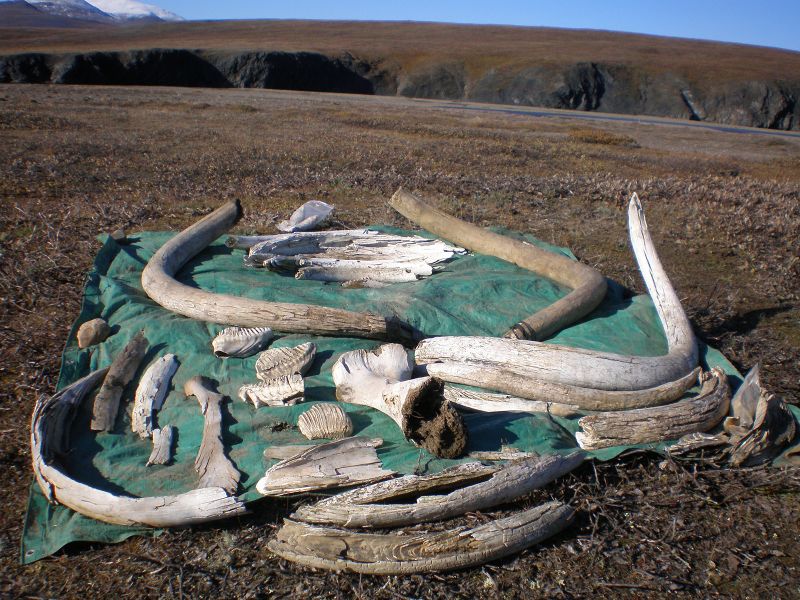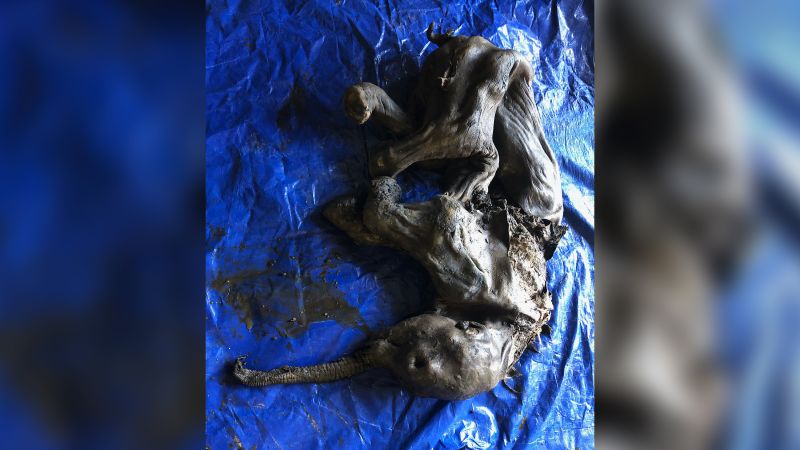
14,000-Year-Old Mammoth Tusk Reveals Human Settlements in Alaska

A new study has revealed a fascinating connection between early human settlements in Alaska and the movements of a female woolly mammoth that lived 14,000 years ago. This groundbreaking research sheds light on the relationship between humans and mammoths, offering a glimpse into the lives of some of the first people to make their way across the Bering Land Bridge.
Tracing the Movements of a Woolly Mammoth
Analysis of a 14,000-year-old tusk found in Alaska has provided valuable insights into the movements of a female woolly mammoth, uncovering a remarkable correlation with early human settlements in the region. The tusk, belonging to a mammoth named Élmayųujey’eh or Elma, was discovered at the Swan Point archaeological site in central Alaska.
OLYMPUS DIGITAL CAMERA
The research, led by Audrey Rowe, a doctoral student at the University of Alaska Fairbanks, utilized a new tool for isotope analysis and a map of archaeological sites to establish the connection between the mammoth's movements and human settlements. The findings suggest that humans established seasonal hunting camps in areas frequented by woolly mammoths, providing a unique perspective on the coexistence of these ancient species.
Karen Spaleta, one of the new study's coauthors, takes a sample from a mammoth tusk found at Alaska's Swan Point archaeological site. She is deputy director of the Alaska Stable Isotope Facility.
The use of strontium isotopes in the tusk, along with data from radiocarbon and DNA analysis, allowed researchers to reconstruct the mammoth's movements and dietary habits. The study, published in the journal Science Advances, marks a significant advancement in our understanding of mammoth behavior and the interaction between humans and mammoths.
A mummified baby wooly mammoth, still covered in skin and hair, was found in Canada.
Insights from Isotope Analysis
The groundbreaking research relied on isotope analysis of the mammoth tusk to uncover details of the animal's life and movements. Strontium isotopes, derived from the breakdown of the mineral rubidium, provided valuable information about the mammoth's diet and geographical range.
The illustration represents a reconstruction of the steppe mammoths that preceded the woolly mammoth, based on the genetic knowledge we now have from the Adycha mammoth. Illustration: Beth Zaiken/Centre for Palaeogenetics
The slow process of strontium formation and its incorporation into the mammoth tusks allowed scientists to map the animal's movements based on the strontium levels within the tusk layers. This innovative approach, combined with geological mapping and archaeological site locations, revealed a close correlation between the mammoth's range and human settlement areas.
An ancient engraving of a hunter is seen in the hills outside the town of Khomein in central Iran on October 24, 2016. An Iranian archaeologist has spent years in an almost single-handed quest across the country's hills and desert plains to uncover ancient rock art that could be among the oldest in the world. Now he hopes that renewed ties with the West after years of international isolation could help decipher its mysteries. The Khomein hills are typical of rock art locations around the world -- a once-fertile riverside spot that supported sizeable settlements. As in other places around the world, the artists were fixated by a single image: in Iran, pictures of the ibex deer account for more than 90 percent of the ancient engravings (Photo by ATTA KENARE / AFP) (Photo by ATTA KENARE/AFP via Getty Images)
Reimagining Human-Mammoth Interactions
The study's findings not only provide new insights into mammoth behavior but also challenge traditional perceptions of human-mammoth interactions. The research team commissioned a digital image of the two species, depicting humans as a family observing the mammoths, rather than aggressive hunters.
Lead researcher Audrey Rowe emphasized that early humans likely established hunting camps in areas frequented by mammoths, highlighting the coexistence and interdependence of the two species. The reimagined image aims to convey the complex relationship between humans and mammoths, showcasing the skill and knowledge required for survival in the ancient hunter-gatherer society.















